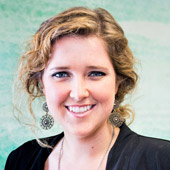AI, GenAI & Disruptive Innovation Expert; #1 Bestselling Author; 2024 TEC Canada Speaker of the Year
Jim Harris Biography
Jim Harris is one of North America’s foremost thinkers on AI, GenAI, disruption and innovation. He is one of the world’s leading keynote speakers presenting internationally at more than 60 in-person and virtual events a year. Association magazine ranked him as one of North America’s top ten speakers. Harris also leads strategic planning sessions with executive teams. His clients include American Express, Barclays Bank, Canon, GM, IBM, SAP, Munich Re, the Top 200 CIOs of India, the UK Cabinet Office, Swiss Re, Walmart, Zurich Insurance.
In February 2024, Harris was recognized as the Speaker of the Year by TEC Canada. TEC is the largest CEO peer mentoring organization in Canada and part of Vistage, the largest CEO mentoring group globally – with 45,000 CEOs. The award recognizes his presentations on AI which have been described as “mind blowing,” “riveting” and “eye opening.”
Harris’s last book, "Blindsided!," has been published in 80 countries and is a #1 international bestseller. Soundview Executive Summaries selected "Blindsided!" as one of the best business books of the year sending a summary to 80,000 executives globally. The Miami Herald calls "Blindsided!" “Brilliant stuff!”
As a management consultant, Harris works with leading businesses, Fortune 500 companies, and organizations aspiring to join these ranks. From 1992-1996, he represented the Covey Leadership Center – teaching Dr. Stephen Covey’s work, "The Seven Habits of Highly Effective People."
Contact a speaker booking agent to check availability on Jim Harris and other top speakers and celebrities.
Jim Harris Speaking Topics
-
Leading in Turbulent Times
VUCA: Building Agility & Resilience
Volatility, Uncertainty, Complexity, and Ambiguity (VUCA) – is the defining reality of modern business. For today’s executives, mastering VUCA is essential to navigating the turbulence and turning uncertainty into opportunity.
The Age of Accelerated Change
We are witnessing the fastest, most disruptive period in corporate history. Markets shift overnight. Technologies leapfrog decades. Consumer behaviors evolve in real time. The scale and speed of change are without precedent:
- On April 3-4, 2025, US markets lost $6.6 trillion in value following President Trump’s announcement of tariffs on 90 countries. Five days later, after the decision was paused, markets rebounded by $5.4 trillion – a staggering single-day recovery.
- On January 27, 2025, China’s DeepSeek unveiled its R-1 AI model, instantly disrupting global tech. U.S. high-tech firms lost $1 trillion in a single day. NVIDIA alone dropped $600 billion, the largest single-day market cap loss in US history.
- It took the airline industry 68 years to reach 50 million users. It took Pokémon Go just 19 days.
These events aren’t anomalies – they’re signals of a world in permanent flux. Leadership strategies must evolve accordingly.
The Executive Imperative in a VUCA Landscape
For C-suite executives, this moment demands more than operational excellence. It requires visionary leadership, systemic thinking, and a willingness to experiment at scale. Key questions every executive team must address:
- How can we adapt faster?
- What systems will allow us to pivot, scale, and sustain momentum?
- How do we build organizational resilience at every level?
- How do we make bold, high-stakes decisions amid uncertainty?
- What kind of leadership is required when there is no clarity?
- How do we lead through crises (economic shocks, pandemics, geopolitical upheaval?
- How do we keep our people engaged, aligned & inspired amid constant change?
- How can we future-proof our business in the face of accelerating disruption?
VUCA as a Strategic Advantage
Leaders who understand the nature of VUCA don't just survive—they thrive. They create adaptive organizations, nurture courageous cultures, and lead with both decisiveness and humility.
In a world where transformation not optional, mastering VUCA is essential. Those who develop the capacity it will outpace disruption—and shape the future of business.
-
The AI Revolution: The Most Transformative Tech of Our Time Creating Trillions of Value
AI is transforming business, government and society as a whole:
- We’re seeing AI applications with 10X to 10,000X increases in productivity!
- AI will add up to $4.4 trillion of economic value every year by 2030
- Many aspects of business, associations, government and society are being enhanced by this transformative technology.
This fast-paced, dynamic session will focus on proven, practical strategies, tactics, and actionable tools. It will highlight dozens of AI and GenAI apps and case studies focused on improving customer satisfaction, dramatically shortening cycle times, increasing sales and cutting costs. It will highlight benefits for many different functions within an organization: sales, marketing, customer service and finance.
In the US, there are nearly 2 million job openings in health care alone. AI can save $386 billion a year if fully implemented in health care alone and while addressing the staff shortage. Jim Harris’s sessions have been described as “mind-blowing,” “riveting” and “eye-opening.”
The session will explore:
- What are the implications for business leaders?
- Where and how to begin?
- What resources are available to begin your AI journey?
Jim Harris Videos

The AI Revolution with Jim Harris 2025
In this engaging and eye-opening video, international bestselling author and keynote speaker Jim Harris dives deep into the extraordinary ways...


-
How do I book Jim Harris to speak at my event?
Our experienced booking agents have successfully helped clients around the world secure speakers like Jim Harris for speaking engagements, personal appearances, product endorsements, or corporate entertainment since 2002. Click the Check Availability button above and complete the form on this page to check availability for Jim Harris, or call our office at 1.800.698.2536 to discuss your upcoming event. One of our experienced agents will be happy to help you get speaking fee information and check availability for Jim Harris or any other speaker of your choice. -
What are the speaker fees for Jim Harris
Speaking fees for Jim Harris, or any other speakers and celebrities, are determined based on a number of factors and may change without notice. The estimated fees to book Jim Harris are $20,000 - $30,000 for live events and $20,000 - $30,000 for virtual events. For the most current speaking fee to hire Jim Harris, click the Check Availability button above and complete the form on this page, or call our office at 1.800.698.2536 to speak directly with an experienced booking agent. -
What topics does Jim Harris speak about?
Jim Harris is a keynote speaker and industry expert whose speaking topics include Artificial Intelligence, Author, Bestselling Authors, Blockchain, Business, Business Leadership, Change Management, Computer Science, Corporate Strategy, Creativity, Cryptocurrency, Digital Transformation, Disruptive Thinking, Economy, Entrepreneurship, Finance, FinTech, Future of Work, Futurism, Innovation, Leadership, Mental Health, Modern Media, Motivational, Strategic Leadership, Technology, Virtual Reality, Workshop -
Where does Jim Harris travel from?
Jim Harris generally travels from Ontario, Canada, but can be booked for private corporate events, personal appearances, keynote speeches, or other performances. For more details, please contact an AAE Booking agent. -
Who is Jim Harris’s agent?
AAE Speakers Bureau has successfully booked keynote speakers like Jim Harris for clients worldwide since 2002. As a full-service speaker booking agency, we have access to virtually any speaker or celebrity in the world. Our agents are happy and able to submit an offer to the speaker or celebrity of your choice, letting you benefit from our reputation and long-standing relationships in the industry. Please click the Check Availability button above and complete the form on this page including the details of your event, or call our office at 1.800.698.2536, and one of our agents will assist you to book Jim Harris for your next private or corporate function. -
What is a full-service speaker booking agency?
AAE Speakers Bureau is a full-service speaker booking agency, meaning we can completely manage the speaker’s or celebrity’s engagement with your organization from the time of booking your speaker through the event’s completion. We provide all of the services you need to host Jim Harris or any other speaker of your choice, including offer negotiation, contractual assistance, accounting and billing, and event speaker travel and logistics services. When you book a speaker with us, we manage the process of hosting a speaker for you as an extension of your team. Our goal is to give our clients peace of mind and a best-in-class service experience when booking a speaker with us. -
Why is AAE Speakers Bureau different from other booking agencies?
If you’re looking for the best, unbiased speaker recommendations, paired with a top-notch customer service experience, you’re in the right place. At AAE Speakers Bureau, we exclusively represent the interests of our clients - professional organizations, companies, universities, and associations. We intentionally do not represent the speakers we feature or book. That is so we can present our clients with the broadest and best performing set of speaker options in the market today, and we can make these recommendations without any obligation to promote a specific speaker over another. This is why when our agents suggest a speaker for your event, you can be assured that they are of the highest quality with a history of proven success with our other clients.
Jim Harris is a keynote speaker and industry expert who speaks on a wide range of topics such as Leading in Turbulent Times, The AI Revolution: The Most Transformative Tech of Our Time Creating Trillions of Value, Exponential Organizations: Why Some Firms are 10 Times Better, Faster & Cheaper Than Traditional Companies , The Great Resignation: It’s Really the Great Rethinking; The Great Disconnect , Disruption Turbo Charging Innovation: A Decade of Change in Just Two and a Half Years and Pandemic Has Driven a Decade of Change . The estimated speaking fee range to book Jim Harris for your event is $20,000 - $30,000. Jim Harris generally travels from Ontario, Canada and can be booked for (private) corporate events, personal appearances, keynote speeches, or other performances. Similar motivational celebrity speakers are Mike Walsh, Jim Carroll, Andrew Busch, Zack Kass and Kevin Surace. Contact All American Speakers for ratings, reviews, videos and information on scheduling Jim Harris for an upcoming live or virtual event.
This website is a resource for event professionals and strives to provide the most comprehensive catalog of thought leaders and industry experts to consider for speaking engagements. A listing or profile on this website does not imply an agency affiliation or endorsement by the talent.
All American Entertainment (AAE) exclusively represents the interests of talent buyers, and does not claim to be the agency or management for any speaker or artist on this site. AAE is a talent booking agency for paid events only. We do not handle requests for donation of time or media requests for interviews, and cannot provide celebrity contact information.
If you are the talent and wish to request a profile update or removal from our online directory, please submit a profile request form.































